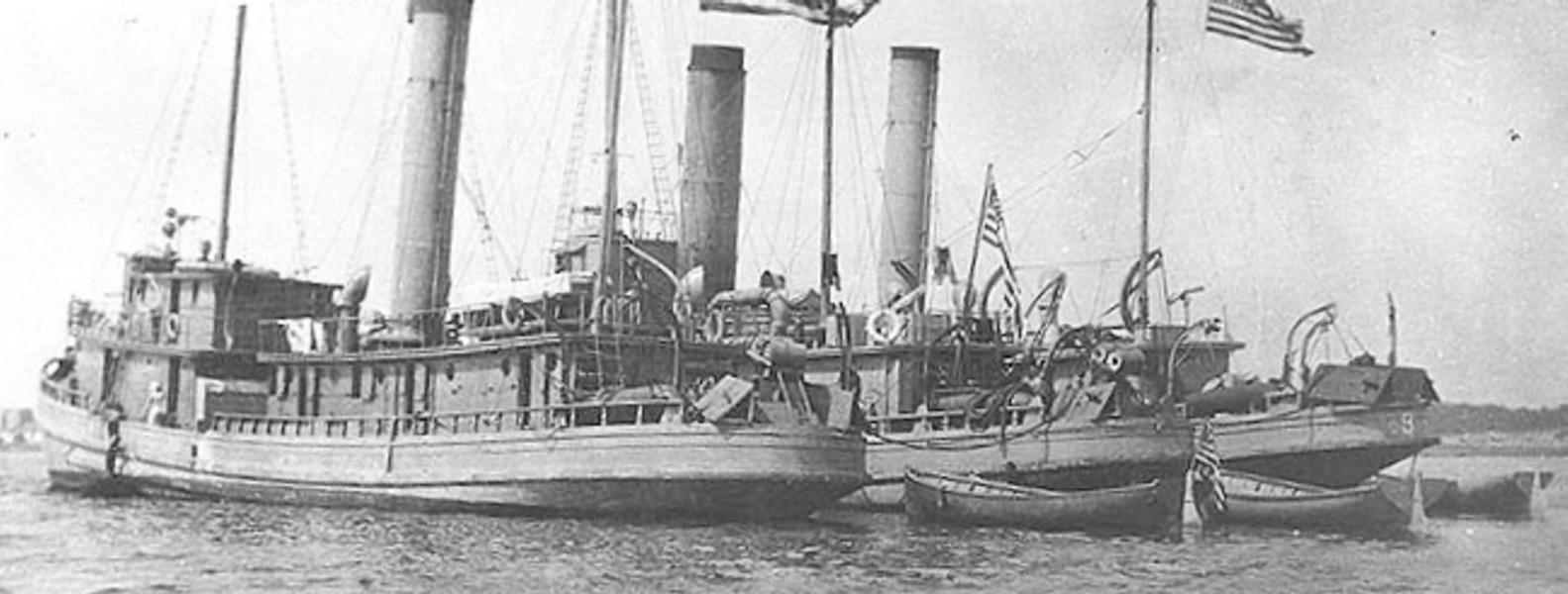- USS James (SP-429)
USS "James" (SP-429), also known as USS "W. T. James" (SP-429), was a 150-foot-long steam
trawler acquired by theU.S. Navy duringWorld War I . She was converted into an armed minesweeper and assigned to theEurope an Theatre, where she performed varied tasks, includingminesweeping , patrolling, and escorting of larger ships inconvoy . In1919 , while returning to theUnited States , she was severely damaged in a storm off the French coast, and sank. Her crew was rescued.A Menhaden fisherman
"W. T. James", a "
Menhaden fisherman" built in1912 atWilmington, Delaware , byHarlan and Hollingsworth , operated out of theVirginia waterways over the next five years of her service as a trawler before becoming required for the World War I war effort. She was acquired by the Navy in the spring of1917 from the Taft Fish Company, ofTappahannock, Virginia ; ordered delivered on1 April ; and accepted on28 May for service as a minesweeper.Under the terms of General Order # 314, issued in late July
1917 , her name was officially shortened to "James", but her original name," W. T. James", also continued in use, at least informally. The erstwhile fishing craft was commissioned in the5th Naval District on10 August 1917 , Ensign E. R. Burr,USNRF , in command.World War I service
Outfitted as a minesweeper
Later in
1917 , "James" was refitted forminesweeping . Designated SP-429, "James" was fitted out for "distant service" at theNorfolk Navy Yard and, near the end of August, departed the Tidewater area, bound forBoston, Massachusetts . There, with other sister ships which had made the passage fromHampton Roads, Virginia , "James" prepared for the voyage toEurope an waters.Assigned to the European coast
Accordingly, after shifting from Boston to
Provincetown, Massachusetts , on25 August , "James" got underway for theAzores two days later, on the first leg of theAtlantic Ocean crossing. Reaching Ponta Delgada, Azores, on6 September , "James" and her sister ships remained for five days, awaiting the tardy arrival of coal and water. On11 September , the group departed theAzores on the last leg of the passage. Disbanded as a mine squadron almost immediately after arriving atBrest, France , on18 September , the vessels of the group soon were busy escorting convoys into and out of port. Between these missions, they spent long weeks awaiting delivery of winches and French minesweeping gear. In November, the mine squadron was reconstituted under the command of Capt. Thomas P. Magruder. "James", among the second group to be fitted out for minesweeping service, soon shifted toLorient ,France , where she would base for the remainder of the war. From Lorient, "James" not only conducted minesweeping operations but covered coastalconvoy s, cleared important passages nearBelle Isle , undertook nightantisubmarine patrols using her crude listening gear, and assisted vessels in distress in her area. In July1918 , "James " and two sister ships swept a minefield south of Belle Isle and, despite the heavy weather in which the ships were forced to operate, accomplished their mission in such exemplary fashion that the three mine vessels received commendations from Vice Admiral Aubry, the French "Prefet Maritime". During this operation, "James" cut out four mines in the space of 17 minutes.Damaged in a storm at sea
300px|thumb|left|Moored at Lorient, France, in 1918.These ships are identified as USS Anderton (SP-530), USS Lewes (SP-383) and USS James (SP-429). Anderton is the middle ship, with her smokestack immediately behind her pilothouse. "James" remained in European waters through the winter of1918 -1919 . She departed Brest on27 April 1919 , bound for the United States, but soon began encountering "boisterous weather" with increasing north westerly winds and a choppy sea. At 1422, the escort commander, in "Marietta" (Gunboat No. 15), ordered the group to return to Brest. When it became evident that "James" was taking on more water than usual, she was directed to proceed to Brest without delay. Unfortunately, the "Menhaden fisherman" worked so much that her seams opened, allowing water to flood the engine rooms and affect the boiler fires -- an occurrence that severely limited the ship's capacity to deal with the rising flood waters. "James" -- her predicament grave -- signaled the nearby "MacDonough" (Torpedo Boat Destroyer No. 9) and Rambler(SP-211) for aid. The former closed swiftly and attempted –- unsuccessfully -- to take the foundering minecraft in tow. The tug "Penobscot" (SP-982) managed to get atowline across to "James" the following morning and towed the ship for about 20 minutes before the line parted."James" sinks
By that point, the heavy seas were nearly swamping the ship. "Marietta" closed as close as was practicable in the gale and put over a line. Rigging up a ferry arrangement with a
liferaft from "James", the trawler's entire crew reached safety on board the gunboat by shortly after 0800 on28 April . Two hours later, "James" sank, six miles off Armen Light.See also
*
U.S. Navy
*World War I References
* [http://www.history.navy.mil/photos/sh-usn/usnsh-w/sp429.htm USS W.T. James (SP-429), 1917-1919. Also known as James. Originally the Steam Trawler W.T. James (1912)]
Wikimedia Foundation. 2010.

